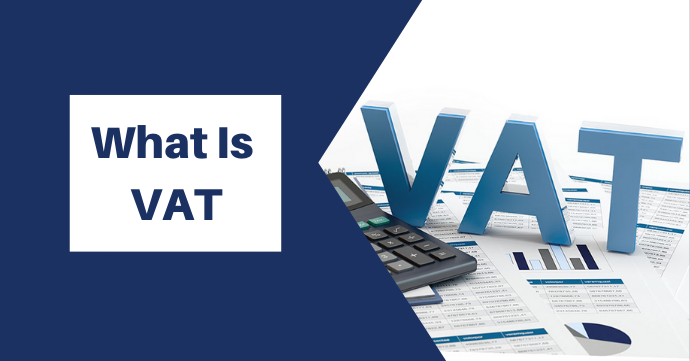VAT or Value-added Tax is a system of indirect taxation in the sales of goods and services sold in the EU.
If you’re doing e-commerce selling in the EU, you need to collect VAT whether or not you are an EU-based business. VAT collection is according to local regulations.
VAT is a consumption tax, meaning it is paid ultimately by the end consumer. In theory, it is a neutral tax and not a cost to you as a business.
So why does it go through you?
VAT is collected in stages in what is known as the “chain of supply”. VAT is collected in each stage where value is added to the product—from raw materials, to production, to shipping, to sales—and then eventually onto the end consumer. Each business in each stage recovers the VAT they paid by being compensated by the next buyer in the chain.
By recording transactions in every stage, tax avoidance is discouraged throughout the chain. The rates are transparent and each component of the sales price is itemized for everyone to see.
Being a seller, you act as a collecting arm on behalf of administrations because you deal directly with end consumers.

VAT Registration & Compliance for E-commerce Sellers
How Do You Calculate VAT?
VAT rates in the EU range from 17% to 27% (see table). With this added rate on your product, you (the seller) become a sort of tax collector on behalf of the government where you sell.
- If you need to add VAT to your products, you need to add the correct VAT rate.
For example, your product is worth €100. To add VAT for Italy (which has a VAT rate of 22%), just multiply your product’s price by 1 plus the VAT rate in decimals. Therefore:
€100 x (1 + .22) = product price with VAT. So,
€100 x 1.22 = €122
The price of €122 is now inclusive of VAT.
Let’s try that again. If you have a product worth €40 and you need to add VAT for Denmark (25%), your formula should be:
€40 x 1.25 = €50
The price of €50 is now inclusive of VAT.
- If you need to find out the value of VAT from the price of a product, you need to multiply the price by the VAT rate.
For example, the product is worth €80 and you need to find out how much VAT was added in France (20%). Your formula should be the price multiplied by the VAT rate in decimals. Therefore:
€80 x .20 = €16
This means the price of €80 was inclusive of €16 VAT.
This also means that if you subtract the VAT from the sales price, you’ll get the product price without VAT. So:
€80 – 16 = €64
where €64 was the product price before VAT.
Here is a complete list of standard VAT rates for all EU member states:
| MAP | Country | VAT Rate |
| Austria | 20% | |
| Belgium | 21% | |
| Bulgaria | 20% | |
| Croatia | 25% | |
| Cyprus | 19% | |
| Czech Republic | 21% | |
| Denmark | 25% | |
| Estonia | 20% | |
| Finland | 24% | |
| France | 20% | |
| Germany | 19% | |
| Greece | 24% | |
| Hungary | 27% | |
| Ireland | 23% | |
| Italy | 22% | |
| Latvia | 21% | |
| Lithuania | 21% | |
| Luxembourg | 17% | |
| Malta | 18% | |
| Netherlands | 21% | |
| Poland | 23% | |
| Portugal | 23% | |
| Romania | 19% | |
| Slovakia | 20% | |
| Slovenia | 22% | |
| Spain | 21% | |
| Sweden | 25% |
Since VAT is for goods and services within the EU, VAT is applied on importation but not on exportation to a non-EU country. However, proof of this (exportation to a non-EU country) is required. You may be asked for supporting documents.
Read posts
UK VAT REGISTRATION AND BREXIT VAT CHANGES 2021
How to Calculate VAT Returns
VAT-registered businesses charge VAT on their sales (output tax) and recover VAT on their purchases and expenses (input tax). Input VAT is deductible from output VAT. The difference (VAT payable) is settled through country tax authorities.
These VAT returns are usually paid quarterly.
Helpful tip: It’s more practical to use EU services and goods because the VAT you pay for these is deductible to your total VAT payable.
The Best Solution to Dealing with EU VAT
Unfortunately, some sellers are not aware of the basics of VAT and end up paying the tax from their own profits.
They are also confused with the regulations, including those for importation or exportation.
These regulations are also in the process of being streamlined. If you do business with the UK, the rules have changed since Brexit. And starting 1 July 2021, EU rules are simplified [hyperlink to EU VAT changes article].
Don’t be left behind. Partner up with Munshian Ltd and settle your VAT registration and VAT returns correctly and on time.
Munshian Ltd provides customized VAT services including business VAT registration, comprehensive data checks, timely compliance, and total support through our local accountants. We are up to date with the latest regulations and we can help you from the basics through the transition.
Don’t hesitate.
Contact Munshian Ltd today.





